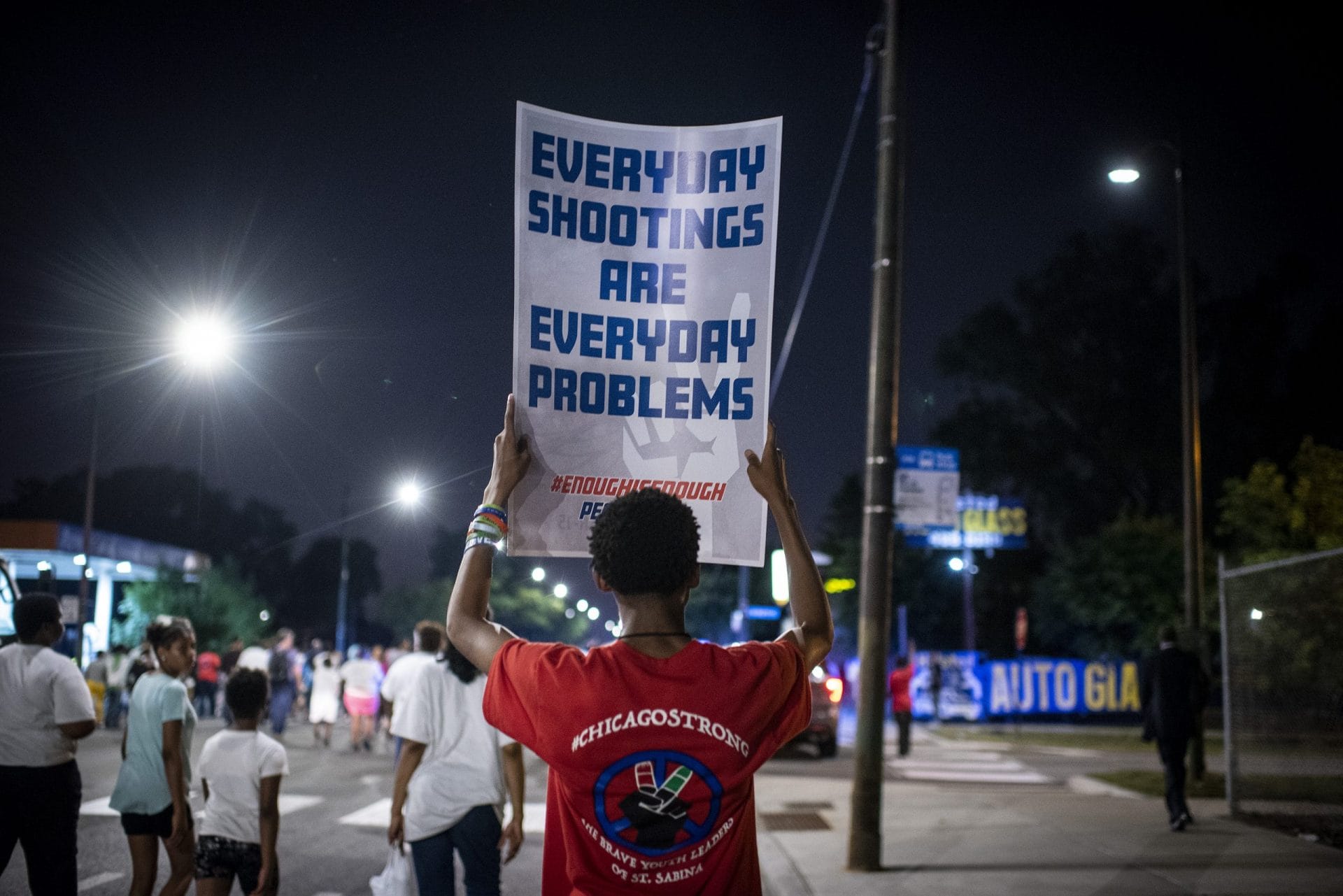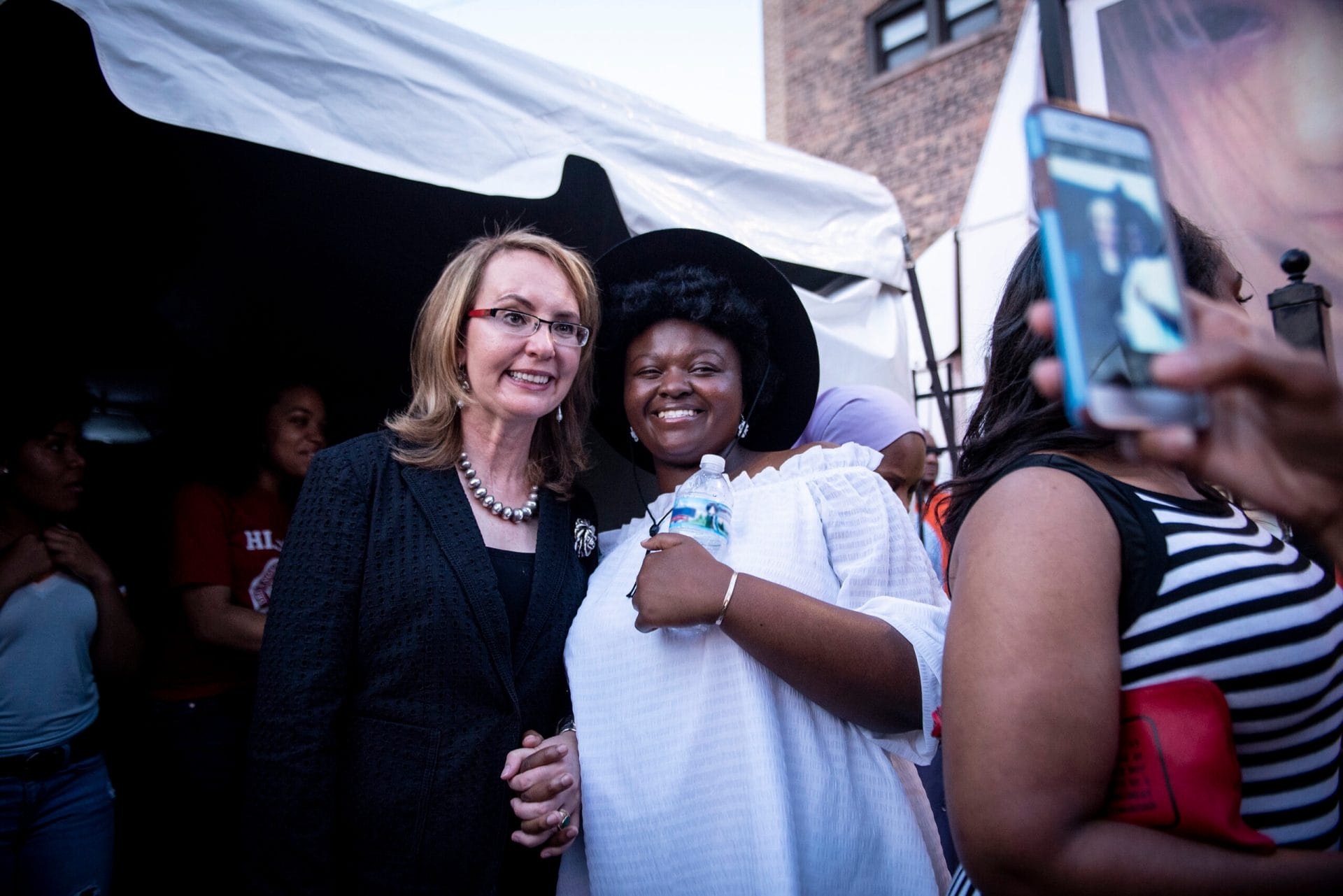MAKE A GIFT
Giffords Center for Violence Intervention champions the strategies and solutions proven to save lives in the communities most vulnerable to gun violence. Help us keep the momentum going as we fight for a safer future.
In order to address community violence, we must center the lifesaving, effective solutions that violence intervention programs offer.
Gun violence is a complex problem, and there’s no one-size-fits-all solution. It’s with this mindset that we must tackle one of the major drivers of our country’s gun violence epidemic: community violence. At Giffords Center for Violence Intervention, we aim to use our network and collective experience to uplift the community violence intervention (CVI) groups doing this work on the ground by providing a variety of resources that highlight best practices, funding sources, and game-changing opportunities.
Community violence intervention must be a pillar of any public safety strategy. Our webinars emphasize this and break down various aspects of the CVI field to help advocates, practitioners, and policymakers in their efforts to spotlight this work. For all our organization’s videos, please visit the Giffords YouTube channel.
Advocacy and lobbying can be incredibly powerful tools for change, but many organizations are unsure if they can engage in either. This webinar is designed to highlight the importance of these tools in the CVI field and to help organizations understand the basic rules that govern both activities. Our CVI partner in California kicks off the webinar by discussing their successful experience with advocacy and lobbying and its overlap with on-the-ground work. Then, a panel of expert lawyers reviews the basics that every organization should know.
Giffords Center for Violence Intervention recently unveiled the CVI Policy Analysis and Tracking Hub (CVI-PATH), a unique tool aimed at boosting advocacy for community violence intervention. This webinar features experts who have played key roles in influencing policy agendas and incorporating CVI into legislation through grassroots advocacy, offering their insights. We recommend this webinar to advocates, policymakers, and community leaders who are looking for practical insights on how to leverage policy analysis and tracking to advance their violence intervention efforts.
In today’s challenging media environment, it’s never been more important—or more difficult—to highlight stories about community-based public safety strategies. This webinar features GIFFORDS communications experts Mary Yatrousis, national press secretary, and Aneesa McMillan, communications director, who discuss how to work with the media and share your story with the public in a compelling and effective way. They share tips on best ways to craft your message, review the proven techniques for engaging with the media, and discuss strategies for increasing the visibility of your CVI work and maximizing its impact in media channels. View slides from presentation.
Community violence intervention organizations are required to follow employment laws and regulations. In this webinar, employment law experts from the law firm Seyfarth Shaw LLP gave a practical overview of topics CVI organizations should know about, including hiring employees, different types of employees, and employee accommodations.
With historic levels of federal funding for CVI, it’s important for organizations in the field to understand what it takes to successfully apply for and manage federal grants. Join experts from the prestigious international law firm Covington & Burling LLP, as well as leadership from Garden Pathways, a CVI organization in Bakersfield, California, which has successfully leveraged federal funding to grow its work, as we overview the process for obtaining federal funding, provide resources, and answer questions from the audience.
The Biden administration has shown tremendous support for community violence intervention by directing multiple federal agencies to fund this work and budgeting $5 billion to support community solutions through the president’s Build Back Better proposal. While this is significant progress, violence intervention and prevention work has largely gone unnoticed by prior administrations. CVI has not received the recognition it deserves, in part, because many Americans are unfamiliar with these neighborhood-driven strategies to reduce gun violence. This first installment of our four-part series seeks to address this knowledge gap by exploring the fundamentals of what CVI work is and why it’s important. This web series is a partnership between Giffords and the Northwestern Neighborhood & Network Initiative (N3) at Northwestern University.
Despite the increased attention on the importance of community violence intervention strategies in preventing gun violence in America, systematic knowledge about the people who engage in this work is practically nonexistent. This presents a practical and policy challenge when attempting to develop the infrastructure for successful CVI organizations and a maturing profession in need of basic knowledge regarding its workforce. Through careful study of practitioners and the practice of violence intervention itself, we can develop answers to pressing questions about this work and its workforce. This second installment of our four-part series features a look into the work and lived experiences of street outreach staff and professionals.
The role of street outreach and other community frontline workers is increasingly recognized as a vital component of any comprehensive response to gun violence. Yet recent studies reveal that these workers are not only often exposed to untenable levels of violence and trauma, they are rarely provided the necessary tools and support to promote health and wellness. This third installment of our four-part series will highlight best practices and innovative strategies to support the health, well-being, and safety of community frontline workers.
Outreach workers and law enforcement officers, through their distinct and separate roles, are both necessary for reducing violence and improving community safety. However, while they are expected to achieve similar outcomes, there is a stark difference in the amount of support and resources that local, state, and federal governments are willing to provide. In this final installment of our four-part web series, we will explore the complex and sometimes volatile relationship between these two professions, describe the roles and responsibilities of each, and discuss how law enforcement and CVI workers can best coexist and achieve their shared goal of safe and thriving communities.

Community violence intervention focuses on reducing the daily homicides and shootings that contribute to our country’s gun violence epidemic. We created Giffords Center for Violence Intervention to champion community-based efforts to save lives and improve public safety.
Read More
Giffords Center for Violence Intervention champions the strategies and solutions proven to save lives in the communities most vulnerable to gun violence. Help us keep the momentum going as we fight for a safer future.